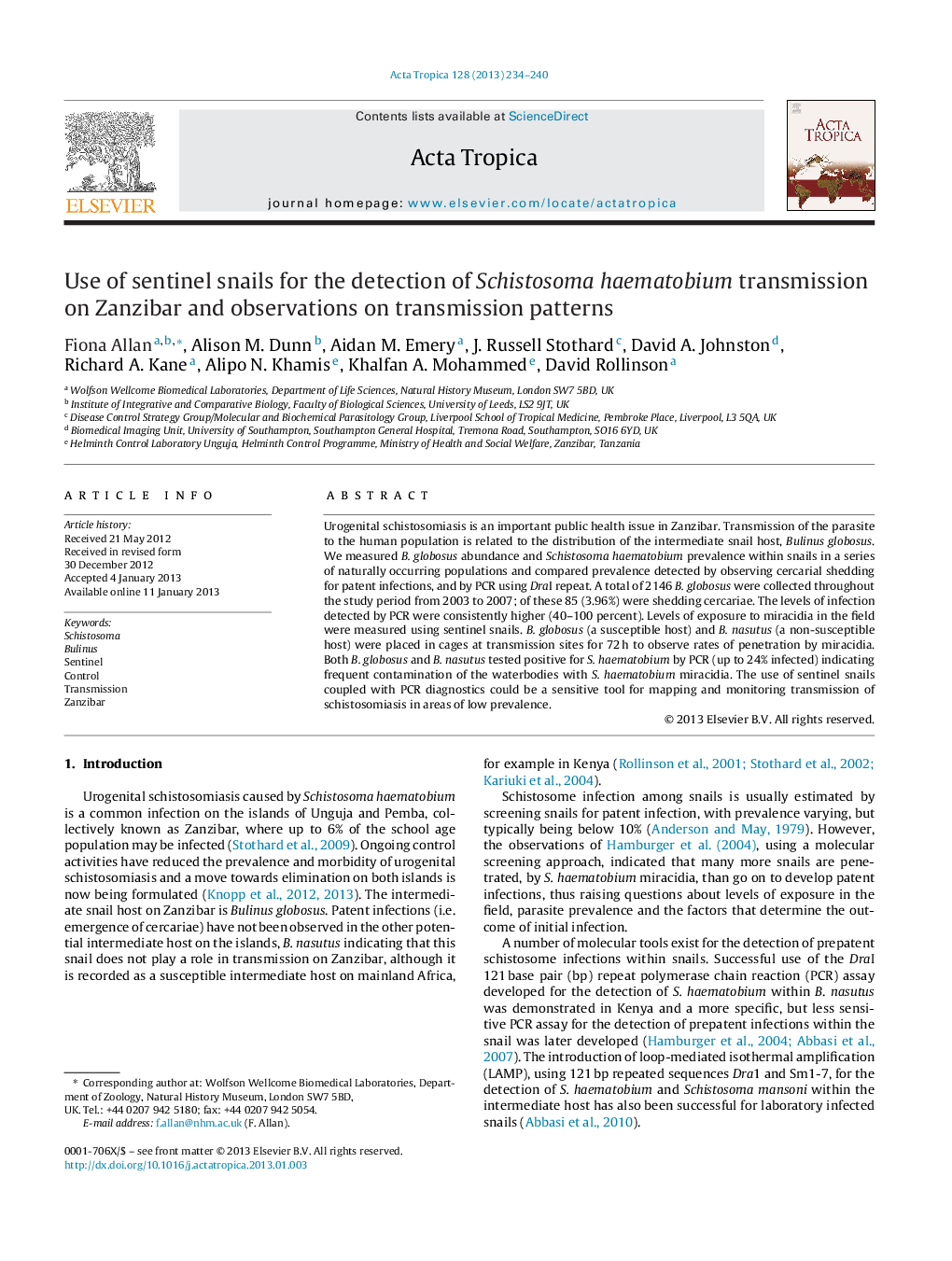| کد مقاله | کد نشریه | سال انتشار | مقاله انگلیسی | نسخه تمام متن |
|---|---|---|---|---|
| 3393868 | 1221409 | 2013 | 7 صفحه PDF | دانلود رایگان |

• Schistosoma haematobium can be detected in infected snails before shedding.
• Snail prepatent infection rates are higher than patent infection rates.
• Refractory snails can be used to indicate the presence of S. haematobium miracidia.
• Infection can be detected in refractory snails for up to 72 h post penetration.
Urogenital schistosomiasis is an important public health issue in Zanzibar. Transmission of the parasite to the human population is related to the distribution of the intermediate snail host, Bulinus globosus. We measured B. globosus abundance and Schistosoma haematobium prevalence within snails in a series of naturally occurring populations and compared prevalence detected by observing cercarial shedding for patent infections, and by PCR using DraI repeat. A total of 2146 B. globosus were collected throughout the study period from 2003 to 2007; of these 85 (3.96%) were shedding cercariae. The levels of infection detected by PCR were consistently higher (40–100 percent). Levels of exposure to miracidia in the field were measured using sentinel snails. B. globosus (a susceptible host) and B. nasutus (a non-susceptible host) were placed in cages at transmission sites for 72 h to observe rates of penetration by miracidia. Both B. globosus and B. nasutus tested positive for S. haematobium by PCR (up to 24% infected) indicating frequent contamination of the waterbodies with S. haematobium miracidia. The use of sentinel snails coupled with PCR diagnostics could be a sensitive tool for mapping and monitoring transmission of schistosomiasis in areas of low prevalence.
Prevalence of Schistosoma haematobium infection has decreased in the human population on Unguja, however as there is a move to elimination it is of use to monitor the intermediate host at transmission sites to see where contamination by miracidia is occurring.Figure optionsDownload as PowerPoint slide
Journal: Acta Tropica - Volume 128, Issue 2, November 2013, Pages 234–240